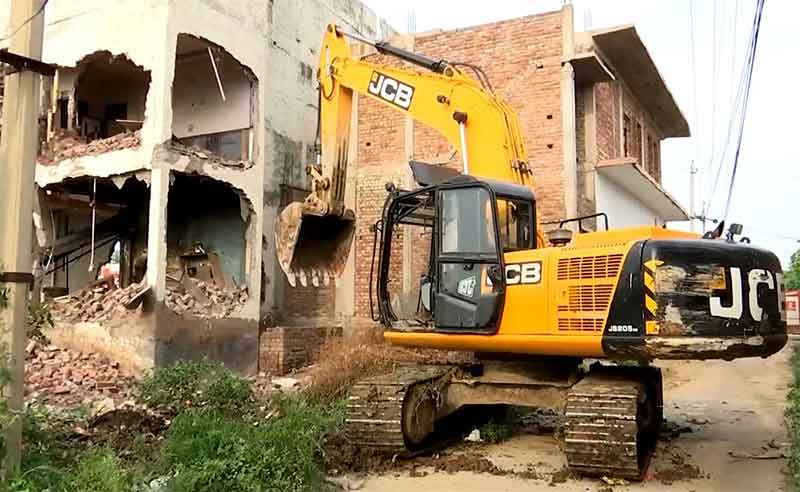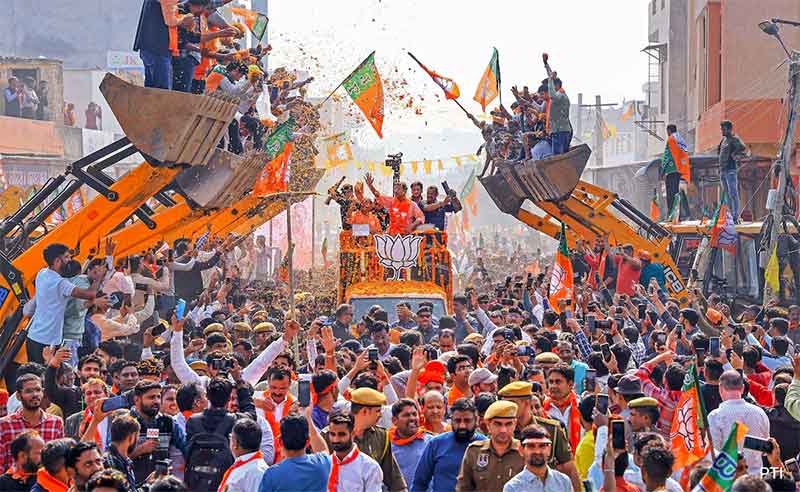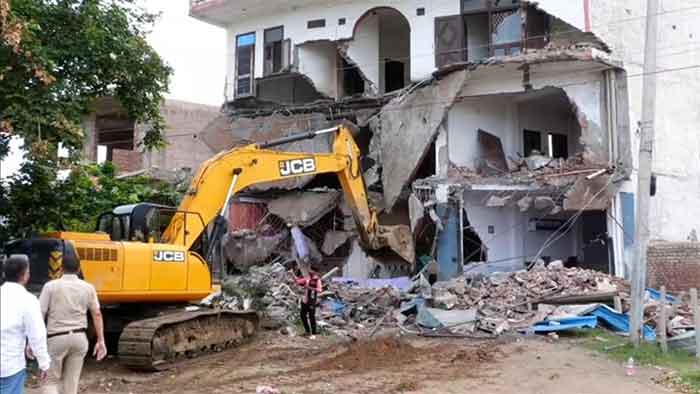
True, individuals can be paid, ideals “sold”, dreams “auctioned”, democratic values “bartered”, independence of media “pawned” and more- at a price and at several levels by leaders to spread communal tension. But the same cannot be said of secularism of all Indians. At this stage, attempts by people to display their “secularism” through peace-marches and other moves together with certain leaders trying to bring bulldozing to a halt only suggest that Indian secularism still lives. Chances of bulldozers or other means spelling defeat of Indian secularism by communalism may be viewed as extremely limited.
If certain right-winged communal elements assume that Indian secularism can easily be defeated leading to riots all over the country, they have erred. It may be noted, despite 1947 being witness to severe communal Hindu-Muslim tension, it did not affect each Hindu or each Muslim. History stands witness to a large number of Muslims having chosen to stay in India. Despite their displaying love for Indian soil, to this day, a few right-winged elements doubt their patriotism and also try igniting communal fire targeting them. But this only displays their limited understanding of Indian cultural diversity and respect for constitutional values regarding secularism and right to religion. The latter lays stress on religious freedom without targeting other communities.
Unfortunately, India is not alone in continuance of practices, which legally are not permitted by its Constitution. Even countries known as extremely democratic, which seem to consider themselves as extremely progressive as well as civilized, aren’t immune to practice discrimination, bias and even abuse along lines such as racial, colour, religion, regional and so forth. Sadly, power-holders’ pressure strategies to hold their sway as they desire – with little concern for humanitarian needs of common persons- appears to be common trend in and of quite a few countries. Ukraine-crisis is just one illustration of this harsh reality. The so-called “Arab Spring” was witness to several countries being targeted in the name of “democracy” with their development pushed backwards by decades. Just like them, Ukraine will probably take generations to return to normalcy.
What should be viewed as key reasons as probably responsible of pursuit of such policies notions by developed as well as developing countries? With respect to global moves, smaller countries are apparently being used as pawns in rivalry between major powers. Politicking of a different nature is at play within India. Temporal linkage of sudden increase in communal tension and legislative elections at various levels in India is too marked to be ignored. This is apparently suggestive of intra-national communal tension, including riots, being deliberately planned for several key reasons.
Paradoxically, failure to lead in actual development of the country and its citizens often prompts politicians to try their hand at communication strategies to distract people as well as increase voters’ support for them. Religious rituals, prayer-services, gatherings and so forth seem to have become a global practice. These include Eid celebrations recently held at the White House. Nothing is wrong, if communication-oriented strategy of such moves is limited to increasing positive interaction with and/or among people of various cultural communities. The nature of practices in the name of religion assumes dangerous waves when motive is deliberately directed to spreading communal divide. In India, such political cards are known as anti-Muslim, anti-Christian as well as biased, which include abuse of certain intra-Hindu sections marked by their castes.
Of late, attempt to use bulldozers against primarily lower class Muslims in few Muslim-dominated areas of capital city (New Delhi) has hit headlines. Yes, a number of people have been deprived of their means of livelihood and even houses, including a few non-Muslims (Hindus), through these means. Ironically, within a few days of one area being targeted by bulldozers, a Hindu-Muslim peace-march was organized in the same place.
Clearly, the preceding point indicates that “bulldozer-move” must not be linked be with Hindu-Muslim communal division at least of that area. Secondly, some attention needs to be given to as to who ordered these bulldozer moves? Political agenda behind the same cannot be ignored. In all probability, even the bulldozer drivers weren’t comfortable with these exercises, understanding economic grievances of those affected. But probably fear of losing monetary benefits prompted them to bulldoze what they had been ordered to. Socio-political frustration at being unable to arouse aggressive communal violence is probably a factor responsible for bulldozer moves. The other is attempt to use anti-Muslim card for electoral reasons with elections at several levels around the corner. The third and perhaps most important is failure of key political leaders to check inflation, increase employment opportunities and solve other economic problems faced by people in general.
True, Covid-phase has led to socio-economic crisis for people at large. The role played by leaders during this phase has further aggravated these problems. When leaders’ governance fails to spell much relief for people, their tendency is to try and distract attract latter’s attention by using communally motivated religious cards. Bulldozer-moves may be viewed as a part of such exercise.
It would be erroneous to view bulldozer moves as reflective of communal frenzy among people of different religions. Rather, over the decades, communal conflict has subsided against economic gains spelled by mutual interaction. Not one but numerous markets in Delhi and other parts of country have unauthorized shops, stalls and other outlets. Outside shops selling fabric, it isn’t surprising to see one or two tailors with their sewing machines. Elsewhere in corridors, sellers with fruits, snacks and other small items spread over small stalls are fairly common. As soon as they learn of authorities to remove such “unauthorized stalls” being round the corner, they disappear within seconds. Tailors don’t take long to hide their machines within shops and start helping as their sales-persons irrespective of their religious differences. Each of these, shop-owners and tailors, needs the other to increase their customers. Communal attack against either spells only monetary loss for entire market. Not surprisingly, people affected by violence manufactured along lines of communal prejudice have started openly accusing external elements (from outside their area) for having deliberately indulged in such violence.
Incidentally, irrespective of their religious differences, loss caused by Covid-phase has further cautioned common people about being extra-cautious in refraining from violence which may spell greater loss for them.
There is another angle to recent bulldoze moves targeting primarily the self-employed Muslims of poorer classes. It is possible, communal angle has been deliberately added to this drive. Small-scale and medium-level, largely self-employed persons with shops and/or stalls are spread throughout rural as well as urban India. Majority of Indians prefer purchasing their commodities, including fruits, vegetables, spices, milk, fabric and so forth from these than from shopping centres such as Malls and/or from online sellers. With Covid-panic having brought down earnings of most of these, they are not all interested in communal conflict worsening their economic conditions further. The message is simple. In the present age, when masses have chosen not to be roused to stage of aggressive communal riots, deliberate attempt of right-winged politicians and leaders to add communal colour to their moves down to stage of bulldozing the poor’s source of livelihood can be viewed as only symbolic of their failure having brought them down to this level. The nature of their communal moves certainly displays their political frustration, defeat of which marks Indian secularism!
Nilofar Suhrawardy is a senior journalist and writer with specialization in communication studies and nuclear diplomacy. She has come out with several books. These include:– Modi’s Victory, A Lesson for the Congress…? (2019); Arab Spring, Not Just a Mirage! (2019), Image and Substance, Modi’s First Year in Office (2015) and Ayodhya Without the Communal Stamp, In the Name of Indian Secularism (2006).














































